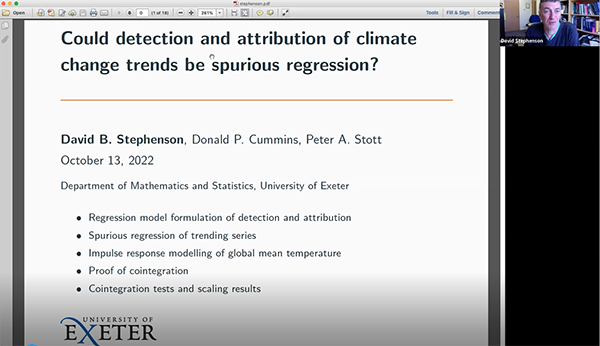Could detection and attribution of climate change trends be spurious regression?
Presenter
October 17, 2022
Abstract
Detection and attribution (D&A) of climate change trends is commonly performed using a variant of Hasselmann’s “optimal fingerprinting” method, which involves a linear regression of historical climate observations on corresponding output from numerical climate models. However, it has long been known in the field of time series analysis that regressions of “non-stationary” or “trending” variables are,in general, statistically inconsistent and often spurious. When non-stationarity is caused by “integrated” processes, as islikely the case for climate variables, consistency of least-squares estimators depends on “cointegration” of regressors. Thisstudy has shown, using an idealized linear-response-model framework, that if standard assumptions hold then the optimalfingerprinting estimator is consistent, and hence robust against spurious regression. In the case of global mean surfacetemperature (GMST), parameterizing abstract linear response models in terms of energy balance provides this result withphysical interpretability. Hypothesis tests conducted using observations of historical GMST and simulation output from 13CMIP6 general circulation models produced no evidence that standard assumptions required for consistency were violated.It is therefore concluded that, at least in the case of GMST, detection and attribution of climate change trends is very likelynot spurious regression. Furthermore, detection of significant cointegration between observations and model output indicatesthat the least-squares estimator is “superconsistent”, with better convergence properties than might previously have beenassumed. Finally, a new method has been developed for quantifying D&A uncertainty, exploiting the notion of cointegrationto eliminate the need for pre-industrial control simulations.
